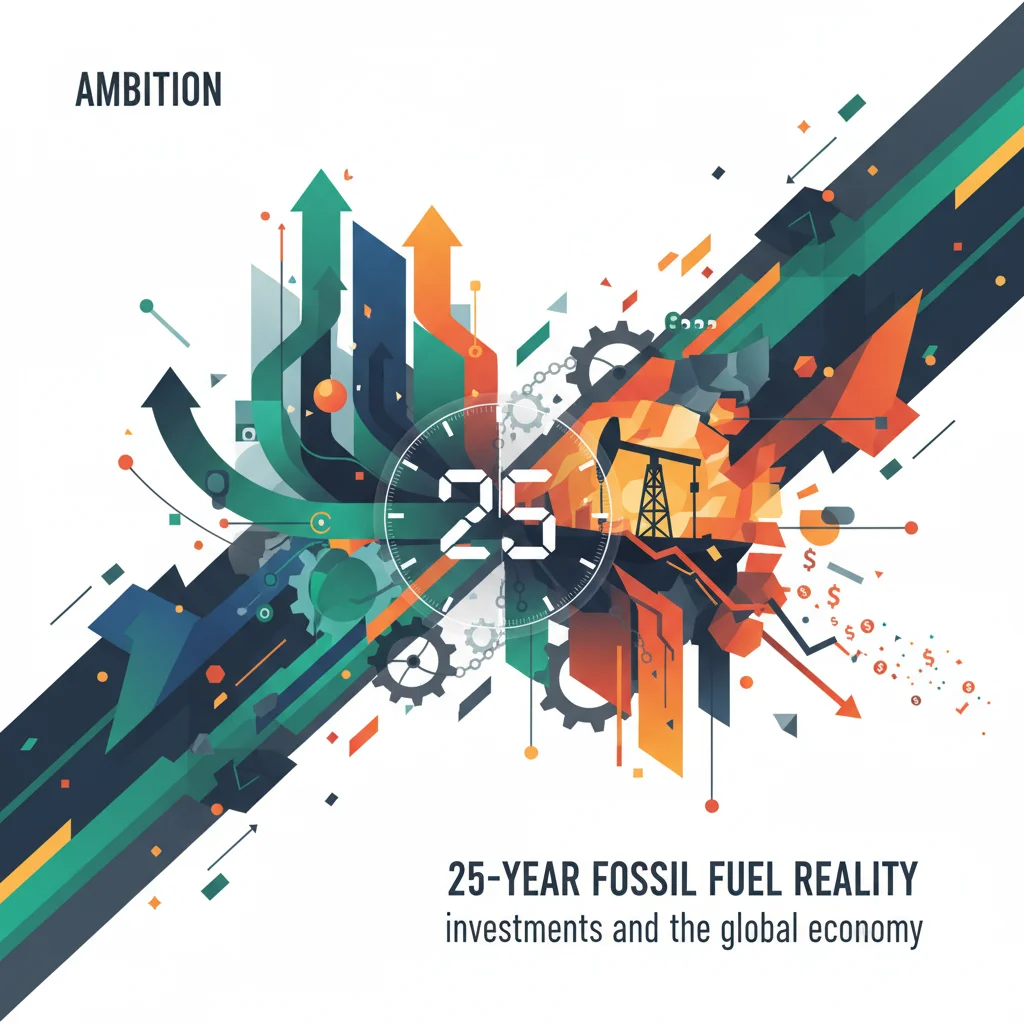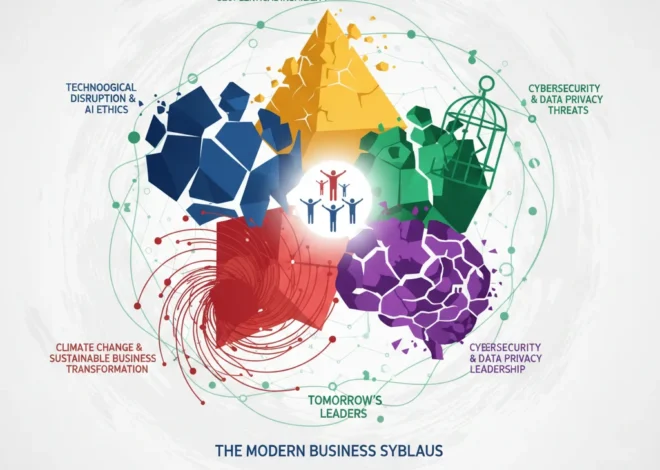
The 25-Year Fossil Fuel Reality: What the IEA’s Stark Warning Means for Your Investments and the Global Economy
In the world of finance and investing, we’re constantly navigating the crosscurrents of ambition and reality. For years, the dominant narrative has been one of a swift and decisive global pivot towards a green economy. Headlines have celebrated the surge in renewable energy capacity and the trillions pledged towards decarbonization. But a recent, sobering report from the world’s leading energy authority suggests this narrative may be more aspiration than actuality.
The International Energy Agency (IEA), in a significant update to its outlook, has painted a picture that should command the attention of every investor, business leader, and financial professional. Their latest analysis introduces a stark scenario: without a radical and immediate change in global policy, the world’s appetite for oil and gas will not only persist but will continue to grow for the next 25 years. This isn’t just a minor forecast adjustment; it’s a fundamental challenge to the prevailing assumptions underpinning a significant portion of the modern stock market and global economic planning.
According to the IEA, this new, more pessimistic outlook was created to reflect what it sees as a “fading commitment to climate change” among global governments. It suggests a widening chasm between the climate pledges made at international summits and the tangible, on-the-ground policies being enacted. For anyone involved in finance, from institutional banking to retail trading, this report is a critical piece of intelligence. It forces us to ask a difficult question: Are our portfolios and business strategies prepared for a world where the energy transition is slower, messier, and more prolonged than we’ve been led to believe?
A Tale of Three Futures: Understanding the IEA’s Scenarios
To fully grasp the gravity of the IEA’s message, it’s essential to understand the different potential futures it models. The agency’s World Energy Outlook is not a single prediction but a set of scenarios based on different policy assumptions. The introduction of this more pessimistic track alongside their existing models provides a crucial spectrum of possibilities for strategic planning.
Here’s a simplified breakdown of the key scenarios, including the new reality check:
| IEA Scenario | Core Assumption | Implication for Fossil Fuel Demand | Likely Economic & Investing Outcome |
|---|---|---|---|
| Net Zero Emissions by 2050 (NZE) | Radical, immediate, and globally coordinated climate action is implemented. | Demand peaks almost immediately and declines sharply. | Rapid growth in renewables, carbon capture, and green hydrogen; high risk of “stranded assets” for traditional energy. |
| Announced Pledges Scenario (APS) | Governments meet all of their announced climate pledges in full and on time. | Demand peaks within the next decade and begins a gradual decline. | Strong but more measured growth in green tech; continued, albeit diminishing, role for oil and gas for decades. |
| Stated Policies Scenario (STEPS) / The New Pessimistic Outlook | The world continues on its current trajectory, based only on policies already implemented or firmly in development. | Demand for oil and gas continues to rise for another 25 years, driven by growth in developing economies. | Prolonged profitability for efficient fossil fuel producers; persistent price volatility; slower-than-expected transition. |
The IEA’s decision to formalize a scenario that so closely mirrors our current, lackluster policy reality is a powerful signal. It moves the conversation from what is *possible* to what is *probable* based on observable actions, not just promises. This has profound implications for the global economy and financial markets. Beyond the Ballot Box: Why a State Election in Bihar Matters for India's Economy and Your Investment Portfolio
The Financial Fallout: Rerouting Your Investment Map
For those in finance and investing, the IEA’s updated outlook is not just an abstract warning; it’s a direct challenge to portfolio construction, risk management, and long-term capital allocation. The implications ripple through every corner of the market, from the stock market to private equity and banking.
1. The Re-evaluation of Energy Stocks
The most immediate impact is on the energy sector. The narrative of oil and gas majors as sunset industries facing a terminal decline is complicated by a forecast of 25 more years of demand growth. This doesn’t mean a blind “buy” on all fossil fuel stocks. Instead, it calls for a more nuanced approach:
- Focus on Efficiency and Low Cost: Companies that can produce oil and gas at the lowest cost and with the lowest carbon intensity will be the long-term winners in a high-demand scenario.
- Reassessing “Stranded Asset” Risk: The risk that fossil fuel reserves will become worthless (“stranded”) is significantly lower in the STEPS scenario. However, the regulatory risk remains high and must be priced in.
- The Renewables Paradox: While the long-term trend for renewables is undeniably positive, a slower transition could mean more competition and potentially lower-than-expected near-term growth rates, especially if government subsidies wane. A diversified energy portfolio remains the most prudent strategy.
2. Macroeconomic Tremors for the Global Economy
A world more reliant on fossil fuels is a world more susceptible to the price shocks and geopolitical instability that have defined the past few years. Continued demand, coupled with potential underinvestment in new production (driven by ESG pressures), could create a perfect storm for sustained energy-driven inflation. Central banking policy, corporate earnings, and overall economic growth will remain highly sensitive to volatility in oil and gas markets, a key factor for anyone involved in economics or trading. This prolonged reliance underscores the fragility of global supply chains and the intricate link between energy and economic stability. Beyond the Tweets: A Financial Analysis of Trump's First Year in Office
3. The Role of Banking and Financial Technology
The financial sector sits at the heart of this transition, directing the flow of capital. This report places banks and financial institutions in a difficult position. The pressure to divest from fossil fuels remains immense, yet the reality of continued demand presents lucrative financing opportunities. This is where innovation in financial technology, or fintech, becomes critical.
We may see a surge in fintech solutions aimed at managing this complex reality. For instance, sophisticated new platforms are emerging for carbon trading, allowing companies to more effectively price and offset their emissions. Blockchain technology, often discussed in the context of cryptocurrencies, holds significant potential for creating transparent, auditable supply chains for both fossil fuels and the materials needed for green technologies. This can help investors and banks better quantify the true environmental impact of their portfolios, moving beyond simple divestment to a more sophisticated model of engagement and risk management. Investing in America: Decoding Corporate Strategy in an Era of Economic Unpredictability
Conclusion: Navigating the Crossroads with Open Eyes
The IEA’s latest report is not a prophecy of doom, but a call for realism. It serves as a vital course correction to a narrative that had perhaps become too simplistic. The future is not yet written, and a rapid transition is still possible. However, hope is not a strategy. For investors, business leaders, and financial professionals, the key takeaway is the need for resilience and adaptability.
This means building portfolios that can withstand energy price volatility, investing in companies (both traditional and alternative) that are best-in-class operators, and demanding greater transparency and realism from policymakers. The global economy is at a crossroads. One path is paved with the ambitious pledges of a green future; the other is the well-trodden road of our current energy consumption. The IEA has just posted a large, illuminated sign pointing out that, for now, we are firmly on the latter. The critical task for all of us in the world of finance and investing is to navigate accordingly.


